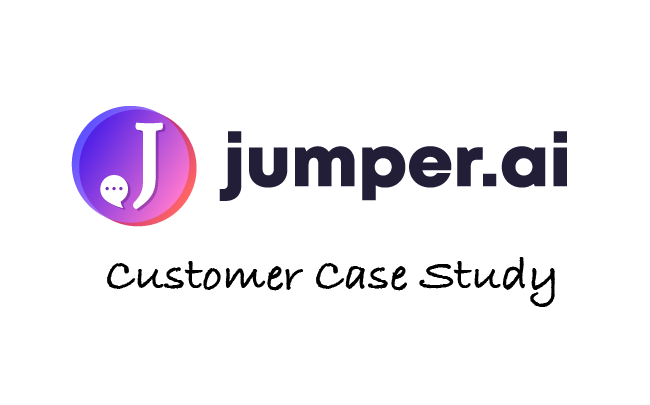Getting new partners for your SaaS Partner Program might be challenging. Getting new partners that fall within your Ideal Partner Profile might be even more difficult.
With the right tools in the box, though, you might find it as easy as can be.
Follow this clear 3-step path to get more partners and an increasing stream of new leads.
Let’s start, shall we?
Step #1 Revise your IPP criteria
First things first: take a closer look at your Ideal Partner Profile (IPP). An IPP is a list of qualities your partner should have to be an ideal fit for your SaaS affiliate program.
Got it? Great. Now strip it to the bare minimum. Perhaps your prospective partner doesn’t really have to be in the same industry as you? Or perhaps you could target consultants in a niche you haven’t thought of before because your fields of expertise seemed too far off?
There’s a bunch of ways in which you could be looking for possible partners. For example, you could:
- think about who struggles with the problem that your service helps to solve. Now, who do those people listen to? What channels are they using? Who is the expert in the field?
- choose a different approach and try to get in partnerships with people who earn their bread and butter on affiliate programs. You’ll have to provide them with some onboarding and training to teach them about your service, but you can be sure they’ve got the nitty-gritty of referring down to the T.
- you may also partner with consultants – they’ll recommend your solution to their clients once they see an opening for that type of service.
- you could also approach your customers – this is the obvious one – but also previous customers who churned. Your service might not be right for them, but that doesn’t mean they don’t know anyone who could benefit from it.
- or you might get in touch with freelancers who review services in your business niche.
The key here is to try to think out of the box: chances are you’ll find a number of possible partnerships once you start looking out of the most popular areas.
Step #2 Look for partners
To help you with this, I’ve come up with 3 criteria that I think could be the basic ones. Feel free to start from those and build your own list.
When looking for partners, check if they:
1. have an audience
Your partners have to have an audience they can pitch your service to.
The audience might come in all shapes and sizes: it might be your prospective partner’s clients or business partners, or a social media or a blog audience. Having an audience who follows and values their opinion means it will be easier for them to recommend your service.
2. have access to your target customers
You should make sure that a potential partner’s audience falls within your ICP.
A customer who falls under your ICP (Ideal Customer Profile) criteria is more likely to subscribe to your service and benefit from it, which in turn means they will stay with you for longer, bringing value both for you and your partner.
3. know your service or are willing to learn about it
It’s great when partners have a deep understanding of your service. When they know it inside out they can:
A. pick the leads that are right for your company – the ones that will stay with you for the long term
B. “sell” your service more easily – they’ll know exactly which features could be a selling point for their audience and thus, how to present your service
It isn’t necessary, but it might also be helpful when…
4. they’re in the same industry as you
By that, I don’t only mean your business niche. For example, at Woodpecker’s Partner Program we could be targeting the cold mailing niche since this is what we do – but also B2B companies, as those are the ones we conduct business with.
That’s just a start. You can add any criteria that you feel are crucial for your business.
Now, since you know exactly who you’re looking for, let’s move on to creating an enticing Partner Value Proposition.
Step #3 Customize your Partner Value Proposition
Partner Value Proposition is the foundation on which you forge your partnerships. It’s the part when you tell your prospective partner why you reached out to them and present them the specific value they might get if they agree to your partnership.
But it doesn’t suffice to just create one Value Proposition for each and every prospective partner that you’re trying to approach. To get the best results, you need to personalize them.
How do you decide what groups to divide them in? Here’s where putting yourself in your partner’s shoes comes in handy again. Base your segmentation on their needs and the specific benefits they might get from partnering with you. For example, apart from the obvious value – which is money – affiliating with you might also help your partner to present themselves as an expert in the eyes of their clients.
How to write a customized Partner Value Proposition?
When you’re writing a personalized Value Proposition, try to put emphasis on these 3 elements:
1. focus on your prospective partner’s needs
First things first – start with learning what needs your prospective partner has.
The better you know your potential partner, the better you know how to build the pitch to touch upon their needs. What do they do? What is their business model like? Who is their audience? Think of any questions that could be useful in your case.
When you get answers to those questions, it’s going to be easier for you to present your offer in a way that’ll make them agree to your partnership. Why should they become your partner? What value can you provide them with?
When looking for new partners, you’re not competing with other companies, but for your prospective partner’s time. This is why you need to make your pitch clear on why your partnership would be a good fit for them.
2. show them why your service is easy to sell
Present your service’s features so as to highlight why it would be easy to sell.
What value does it bring? What pain points does it help to solve?
A good tip here could also be to keep some specific use cases on hand. This way you’ll be able to provide your partner with real-life examples of issues your product helped to overcome, and of who might find it helpful.
3. present benefits
Think about what a potential partner can get from joining your affiliate program.
The commission factor certainly is an important incentive, but try to think out of the box and offer your partners unique benefits. What could those be? That’s up to you.
Leave some room for negotiation as well. Allow your potential partners to slightly reshape your offer. For example, they might propose you increase the percentage commission they’d be getting after bringing in a certain amount of customers. If such an approach is in line with your company’s strategy, consider doing so – it might result in a boost of people joining your program.
Tip: when you’re reaching out to prospective partners, try to steer away from using words that might alarm SPAM filters, such as ‘commission’, ‘dollar’ or ‘%’.
Start conversations using email automation
I always recommend using a high-touch approach as possible, but if you find you can’t spare the time to contact partners one-by-one, you might think about using automation.
After you’ve collected your prospective partners’ data (you might have done it with a prospecting tool), import it into Woodpecker. Then I’d advise you to tag and segment them into different groups of your choice. You might divide them according to where you’ve found them, what their area of expertise is, whether they are familiar with the type of service you’re selling, etc. Any other type of specific information you can get would work great here.
When you’re creating the email copy, remember to keep it relevant. Write it with your Partner Value Proposition in mind, but – just a reminder – don’t use one general PVP. Tailor it for each partner. Use snippets to get one-of-a-kind emails.
Be transparent about what you offer, and provide them with a clear incentive to hop on board with you.
It’s also worth mentioning to keep the message short and concise. Tell them why you think it would be beneficial for them if they agreed to the partnership. Consider adding a link to make joining your program as easy as possible.
So, for example, if you run a CRM software company, your opening email might look like this:
Hello, {{First_Name}}, I’ve seen your {{Content_Type}} in which you reviewed CRMs and I’m just reaching out to see if you’d be interested in joining our Partner Program. You could recommend our platform to {{Prospect’s_Audience}}. I really think they could find it useful. Drop me a line if you’re interested or would like to learn more about our platform.
For more tricks on how to write reply-worthy cold emails see this post.
Don’t forget about follow-up messages. Why are they so important? Professionals are usually busy and sometimes let some of the messages they get slip through without an answer. If you send a follow-up message, your message is more likely to be noticed.
Set a sequence of follow-ups that will automatically stop being sent when your potential partner replies to one of your emails.
Over to you
You can expand your Partner Program, and the most beneficial way to do it is with a personalized approach. It’s important to mold your offer to each prospective partner. Why? In this case, you won’t kill many birds with one stone. A tailored pitch is what will make them more likely to join your Partner Program.
READ ALSO

Woodpecker Partner Program – What Do You Get As a Partner?
See what you can get by joining the Woodpecker Partner Program.

What Is a Cross-Promotion & How to Find Cross-Promotion Partners?
I would say that for a business like ours to thrive in the internet era, it needs three things: a website that converts, testimonials from happy customers and a steady flow of targeted visitors. Out of the three, the most tricky to get is the last one. You can improve website conversion rates by running A/B tests. You may encourage people to leave you testimonials with an email plan. But how to get a growing number of visitors who fit your target? In this post, I share one idea that can boost your website visits.

How SaaS for E-commerce Can Generate Leads Through Email: Jumper.ai
Positive feedback from a satisfied customer is always a huge motivator that gives us wings. Recently we had a pleasure to interview Jumper.ai team who shared their experience with Woodpecker and told us a few words about how it helped them reach new customers. Read the full story below.

